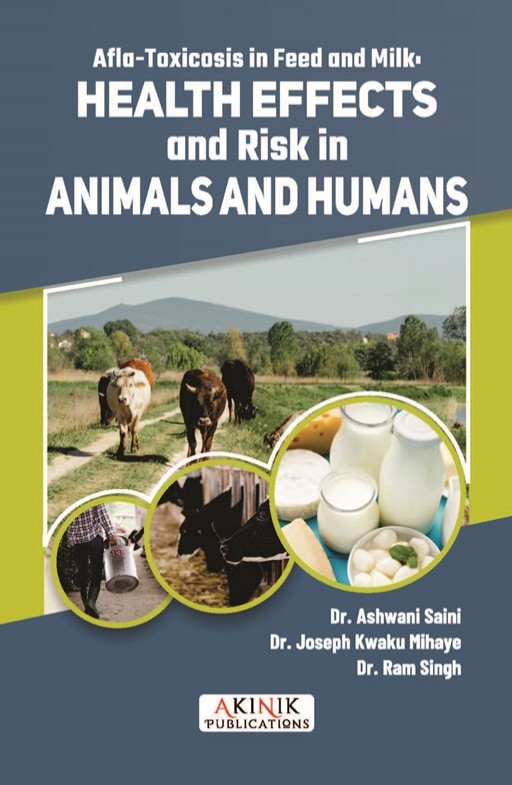Description
Transmission of aflatoxin from aflatoxin - contaminated feed to Milk of Nili-Ravi Buffalo Ashwani Saini1 & Joseph Kwaku Mihaye2 ( CORRESPONDING AUTHOR : ashwani.saini2013@gmail.com ) ABSTRACT Aflatoxins are highly toxic secondary metabolites produced by Aspergillus species, with aflatoxin B₁ (AFB₁) being the most potent. In lactating animals, ingested AFB₁ is metabolized in the liver and excreted into milk as aflatoxin M₁ (AFM₁), a compound of significant public health concern due to its carcinogenic and hepatotoxic effects. This study was conducted under the supervision of Hawkins University, AUSTIN, TEXAS, USA to determine the transmission (carry-over) rate of AFB₁ from contaminated feed to milk in Nili Ravi buffaloes under controlled feeding conditions. Twelve clinically healthy lactating Nili Ravi buffaloes in early to mid-lactation were randomly divided into two groups : a control group (aflatoxin-free diet) and a treatment group (diet spiked with 50 µg AFB₁/kg feed). Over a 38-day feeding trial, milk and feed samples were collected and analyzed for AFB₁ and AFM₁ concentrations using high-performance liquid chromatography (HPLC). Results demonstrated a direct relationship between dietary AFB₁ intake and AFM₁concentration in milk, with a mean carry-over rate of 1.8–2.4%. The treatment group exhibited AFM₁ levels exceeding the European Union maximum permissible limit of 0.05 µg/kg in milk, highlighting a potential food safety risk. Comparative analysis with previous studies indicated that buffaloes exhibit similar or slightly higher carry-over rates than crossbred dairy cattle, possibly due to differences in rumen metabolism and milk yield patterns. The findings underscore the need for stringent feed quality monitoring, proper storage practices, and the adoption of aflatoxin mitigation strategies in buffalo dairying systems. The study also identifies areas for future research, including seasonal variation in carry-over rates and the role of dietary binders in reducing AFM₁ secretion.AUTHORSHIP : 1. STO, ICAR,CIRB,SUB-CAMPUS,NABHA 2. PROF. HAWKINS UNIV., AUSTIN, TEXAS, USA



